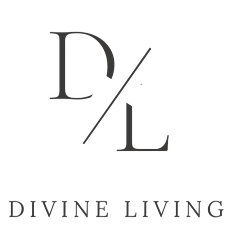
Boost Your Home’s Energy Efficiency with the Right Window Furnishings: A Guide for Homeowners
As Australian homeowners, we’re always looking for practical ways to make our homes more comfortable, cost-effective, and environmentally friendly. One of the most effective yet often overlooked areas is our window furnishings. The right choice can significantly reduce energy consumption, lower your household bills, and improve your home’s overall comfort—saving you money and reducing your carbon footprint.
In this guide, we’ll explore how shutters, curtains, honeycomb blinds, and roller blinds influence your home’s energy efficiency—supported by relevant Australian data and insights. If you’re keen to minimize your heating and cooling costs while making your home more sustainable, read on.
Why Window Furnishings Matter for Energy Efficiency in Australia
Australian homes are heavily impacted by the climate: hot summers, cool winters, and high humidity in many regions. According to the Australian Energy Regulator, around 40% of household energy use is for heating and cooling. Windows are a key factor; they can account for up to 30% of heat loss in winter and up to 70% of unwanted heat gain in summer, especially in homes with single-glazed or poorly insulated windows.
Well-chosen window treatments act as an additional thermal barrier, helping you keep your indoor temperatures stable and your energy bills down. Let’s look at how each product can help.
1. Shutters: Durable and Highly Insulating
Impact on Energy Efficiency:
Australian research indicates that well-maintained plantation shutters can reduce heat transfer through windows by up to 50% when properly closed. Their solid construction and adjustable louvers help block drafts and minimize heat loss during the cooler months, while reflecting and deflecting heat during summer.
Expert Insight:
A CSIRO study on Australian homes found that shutters can improve thermal performance, especially in older homes with single-glazed windows. They provide a long-lasting, effective insulation layer that can help keep your home warm in winter and cool in summer.
Homeowner Takeaway:
For homes in cooler regions, shutters are a cost-effective way to improve insulation. They also add a touch of style and durability, making them a smart investment.
2. Curtains: Affordable, Flexible, and Effective
Impact on Energy Efficiency:
Heavy, thermal or blackout curtains can cut heat loss in winter by roughly 25-35%, and block up to 80% of solar heat gain during hot summer days when drawn closed. Their fabric density and lining are crucial for maximum insulative value.
Australian Data:
Research from the Australian Energy Regulator and local home insulation studies show that layered curtains, especially with thermal lining, can noticeably reduce energy bills by keeping homes warmer in winter and cooler in summer.
Homeowner Takeaway:
Curtains are an affordable and versatile option. Opt for thick, lined fabrics or layered curtains for better insulation, and open or close them according to the season to maximize comfort and savings.
3. Honeycomb (Cellular) Blinds: Superior Insulation
Impact on Energy Efficiency:
Honeycomb blinds are designed with a cellular structure that traps air, creating a natural insulative barrier. Australian studies show they can reduce heat transfer by up to 40%, helping to keep homes warmer in winter and cooler in summer.
Expert Insight:
Local research by the Australian Building Codes Board indicates that honeycomb shades can significantly improve a window’s R-value—the measure of thermal resistance—by creating an effective insulating barrier. This translates to substantial energy savings across the year.
Homeowner Takeaway:
For those looking to improve comfort and reduce reliance on heating and cooling, honeycomb blinds are an excellent investment, especially in climates with significant temperature variations like Melbourne, Adelaide, or Hobart.
4. Roller Blinds: Practical and Effective
Impact on Energy Efficiency:
While traditionally seen as stylish and functional, high-quality blackout roller blinds with thermal backing can contribute to energy savings. They can reduce heat transfer and solar gain by around 15-20%, especially when paired with reflective or insulating fabrics.
Australian Data:
Studies by the Australian Energy Foundation suggest that well-made roller blinds can help reduce the load on your heating and cooling systems, leading to noticeable reductions in energy consumption during extreme weather.
Homeowner Takeaway:
Roller blinds are a sleek, space-saving solution. Select models with thermal or reflective backing, and layer with other treatments like curtains or shutters for maximum energy efficiency.
Practical Tips to Maximize Your Home’s Energy Efficiency
Layer Your Window Coverings: Combining shutters, curtains, and blinds creates a comprehensive barrier against heat transfer.
Operate Strategically: Keep shutters or blinds closed during the hottest part of summer and during cold nights in winter to retain indoor heat.
Ensure Proper Fit: Gaps and poorly fitted treatments reduce efficiency. Professional installation guarantees maximum insulation.
Use Automation: Smart window treatments that open or close based on weather or time of day can optimize energy savings with minimal effort.
Final Thoughts
Investing in the right window furnishings isn’t just about aesthetics—it’s a practical, eco-friendly way to improve your home’s energy efficiency and reduce your household energy bills. Shutters, curtains, honeycomb blinds, and roller blinds each offer unique benefits, and layering them effectively can make a real difference in your home’s comfort.
At Divine Living, we’re passionate about helping Australian homeowners create homes that are not only beautiful but also energy-smart and sustainable. Contact us today to explore window treatment options tailored to your climate and lifestyle.
Make your home more comfortable, more efficient, and more sustainable—start with the right windows!
